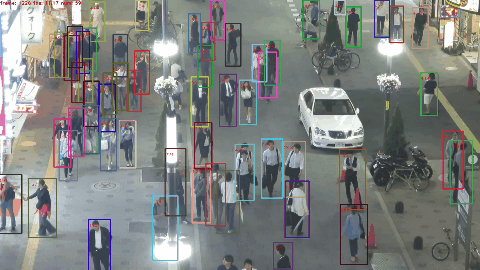Towards Real-Time Multi-Object Tracking
Modern multiple object tracking (MOT) systems usually follow the \emph{tracking-by-detection} paradigm. It has 1) a detection model for target localization and 2) an appearance embedding model for data association. Having the two models separately executed might lead to efficiency problems, as the running time is simply a sum of the two steps without investigating potential structures that can be shared between them. Existing research efforts on real-time MOT usually focus on the association step, so they are essentially real-time association methods but not real-time MOT system. In this paper, we propose an MOT system that allows target detection and appearance embedding to be learned in a shared model. Specifically, we incorporate the appearance embedding model into a single-shot detector, such that the model can simultaneously output detections and the corresponding embeddings. We further propose a simple and fast association method that works in conjunction with the joint model. In both components the computation cost is significantly reduced compared with former MOT systems, resulting in a neat and fast baseline for future follow-ups on real-time MOT algorithm design. To our knowledge, this work reports the first (near) real-time MOT system, with a running speed of 22 to 40 FPS depending on the input resolution. Meanwhile, its tracking accuracy is comparable to the state-of-the-art trackers embodying separate detection and embedding (SDE) learning ($64.4\%$ MOTA \vs $66.1\%$ MOTA on MOT-16 challenge). Code and models are available at \url{https://github.com/Zhongdao/Towards-Realtime-MOT}.
PDF Abstract ECCV 2020 PDF ECCV 2020 Abstract






 MOTChallenge
MOTChallenge
 MOT16
MOT16
 CUHK-SYSU
CUHK-SYSU